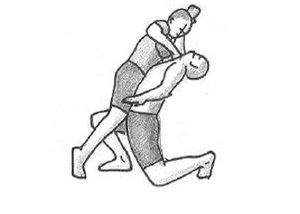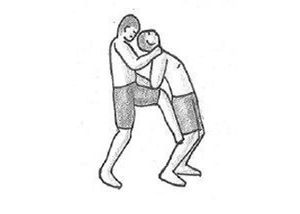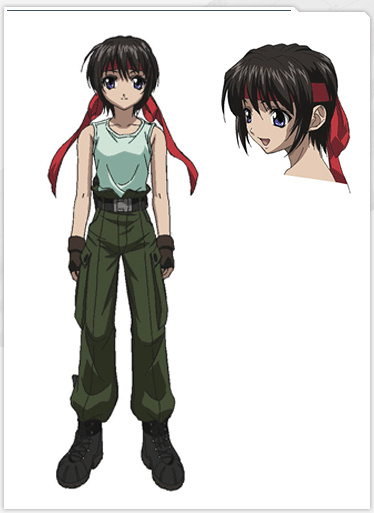SKILLS AND ABILITIES
[ Novice – Apprentice – Adept – Expert – Master ]
FORCE POWERS
- Force-healing | |
- Detoxify Poison | |
- Mechu-deru | |
- Art of the Small |
- Electric Judgment/Ionize | |
- Force-speed/agility | |
- Pyrokinesis | |
- Cryokinesis | |
- Telekinesis | |
LIGHTSABER FORMS
Form I- | | | | | - | | | | | - | | | | |- | | | | |- | | | | |
Form II - | | | | | - | | | | | - | | | | |- | | | | |- | | | | |
Form III - | | | | | - | | | | | - | | | | |- | | | | |- | | | | |
Form IV - | | | | | - | | | | | - | | | | |- | | | | |- | | | | |
Form V
- | | | | | - | | | | | - | | | | |- | | | | |- | | | | |
Form VI
- | | | | | - | | | | | - | | | | |- | | | | |- | | | | |
Form VII
- | | | | | - | | | | | - | | | | |- | | | | |- | | | | |
COMBAT SKILLS
Mandalorian core
Mandalorian Core

Buzzwords:
- Aggressive
- Brutal
- Destructive
- Attacking
- Countering
- Swiveling
- Tracking
- Improvising
- Breaking
Resembles:
Description:
Mandalorian Core emphasizes threat neutralization, simultaneous defensive and offensive maneuvers, and aggression. The Form is known for its focus on real-time situations and its brutally efficient counter-attacks. Derived from primal street-fighting skills taught to
Mandalorians at a young age, it has since been refined for civilian, police and military applications.
At its highest level, ‘Core is most widely known for its use by
Clone Troopers during the
Clone Wars. While less disciplined than the
Imperial Martial Arts System's rigid approach to training soldiers, ‘Core excelled in lateral flexibility across unconventional battlefields. The style has remained popular for both its historical grounding in Mandalorian culture, and its effectiveness in adapting to unpredictable scenarios.
Stance and Striking:
Mandalorian Core borrows from a lot of other Martial Arts Forms, so the stance can vary depending on the situation. The most common stance has both hands up and in front of the body at chin level so that the practitioner can protect their face without blocking their eyes' lateral vision. Elbows get tucked in protectively over the ribs and the knees bend ever so slightly as the practitioner looks to always stay on the balls of their feet. A stable center of balance allows for attacks to be launched swiftly while similarly providing the ability to counter from any direction an attacker might take.
Strikes look to target the body’s more obvious points of vulnerability--eyes, neck, solar plexus, groin or anything that could be hit to quickly end an engagement. Countering is just as important as attacking, with some techniques built into the Form designed to seek out and intercept an opponent's limbs before they can deliver their strikes. A practitioner keeps their head on a swivel, always maintaining awareness of their surroundings while tracking threats in order to look for escape routes, further attackers, or objects that could be used to defend or help attack.
IMAS

Buzzwords:
- Triangular
- Versatile
- Swift
- Looping
- Direct
- Parrying
- Unified
- Basic
- Discipline
- Fundamentals
Resembles:
Description:
The Imperial Martial Arts System (IMAS), was universally taught throughout the armed forces of the
Galactic Empire.
Stormtroopers and officers alike were trained in IMAS for its disciplined approach to effective close quarters engagements. Simple and easy to teach to a large group of trainees at once, IMAS is a system primarily oriented around weaponry. Unarmed movements typically mirrored the movements of weaponry that the practitioners were already being trained to fight with. One of the first lessons of IMAS is that a downward diagonal strike or thrust is the same regardless of whether it is a stick, knife, or empty hand.
IMAS’ favored tactic is “defanging the serpent.” The focus of the practitioner's strikes are directed at the opponent's extended limbs, rather than trying to push through a frontal guarding of the face or torso. This philosophy has become popular with police and military forces for its tendency to help quickly prevent the escalation of violence by ending a fight quickly and effectively.
Stance and Striking:
The hands are held at chest height, ready to deflect and parry incoming attacks at their extension points. Utilizing triangular footwork, the practitioner will choose to advance or retreat at a diagonal to one's opponent in an attempt to disorient opponents that are acclimated to more headlong melee. IMAS practitioners therefore appear to zig-zag randomly as they close for the kill or step aside to dodge a blow.
IMAS practitioners turn their body into attacks with the winding from the previous strike flowing into another strike in rapid succession. IMAS stylists will often strike attacking limbs and weapon hands to cripple them while either parrying or evading the attack. Typical strikes include basic punches, kicks, knees and elbows, but also standard joint locks. Most of the focus in IMAS is incorporating weapons into the patterns.





